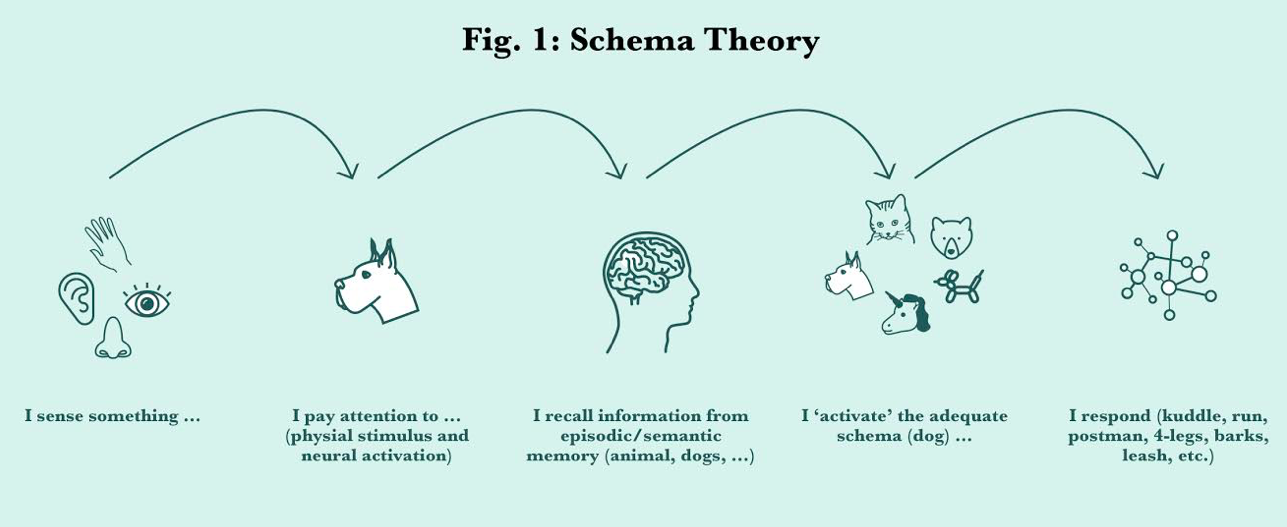
A Brief History of Schema Theory
Schemata are one of the fundamental concepts in cognitive psychology and cognitive science. The theory was first introduced by the Swiss psychologist Jean Piaget in 1923, with fond inspiration from the famous German philosopher Immanuel Kant. Frederic Bartlett’s refined schema theory from 1932 has inspired many of the modern versions of schema theory we can discover in academic circles.
The psychologist Bartlett described a schema as an active organization of past experiences and the one fundamental assumption he made is that all new information interacts with old information represented in a schema. In the late 1970’s and early 1980’s, two psychologists, Marvin Minsky and David Rumelhart, became the strongest advocates for the schema theory. Rumelhart even argued that schema are the building blocks of cognition. For him, schemata are used to interpret sensory data, retrieve information from memory, organize action, and eventually solve problems.
We now think of schema as providing a skeleton structure, which can be filled out with the detailed properties of a particular instance. One problem with current behavioural modelling algorithms is that they don’t explain the causal relationship between peoples’ situations and actions — the events or occurrences in someone’s life that trigger a routine activity. If you have ever been involved in developing an experience map, sketching up service blueprints, building journey maps, or doodling storyboards, then all this must sound pretty familiar.
So let’s look a little bit closer at schema theory and discover the most common schema types, because there are multiple ones, such as procedures, objects, percepts, image, social situations, events and the one we care about; sequences of events.
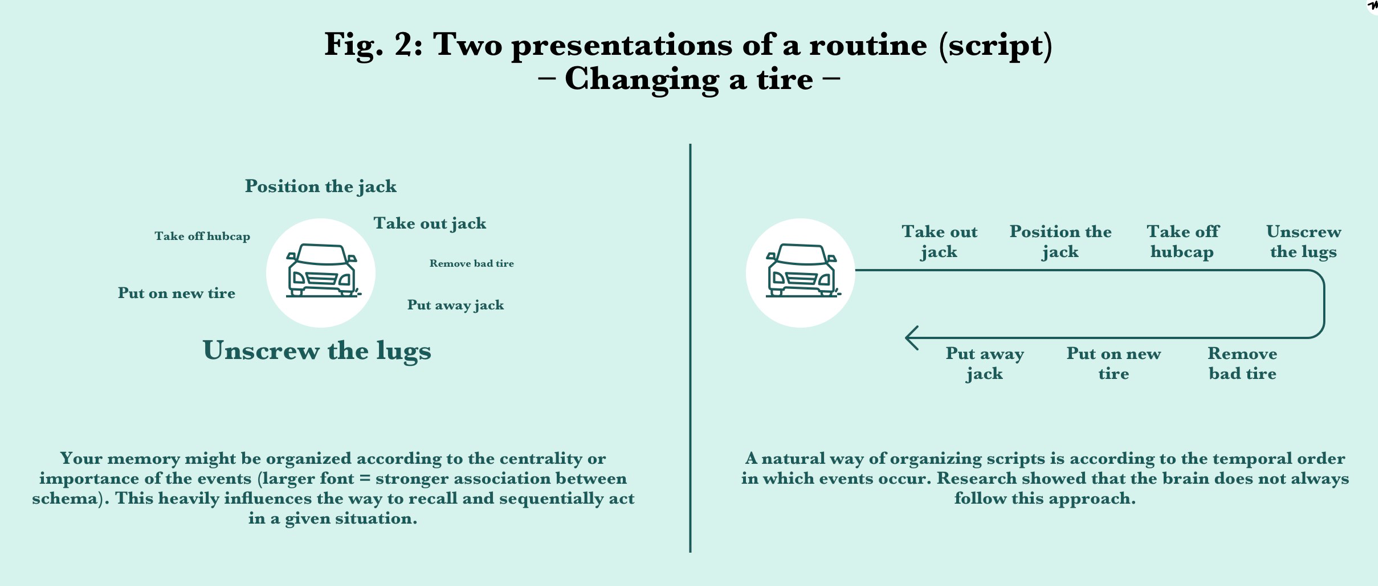
Schema and knowledge clusters
When you hear a user experience designer talk about a user’s mental model, they basically refer to schemata (although most have never heard about these theories before).
“A schema is a cognitive structure for representing and retrieving classes of typical situations for which a similar response is required of the learner” (Peter C.R. Lane, 2000).
People –or I should say, brains– have schemata (organized clusters of knowledge) for almost everything; there is a self-schema, a body-schema, a greet-a-new-person schema, an ideological schema, a school-schema, a 5-star restaurant-schema, a dog-schema, a how-to-change a tire schema, a shopping-schema and perhaps several how-to-use-specific mobile apps schemata. An advantage of having schematic knowledge is that we can oftentimes rely on default knowledge.
This comes in handy when we have to make intelligent (or quick) guesses in the absence of specific knowledge or time. You could argue that schemata are theories or memories about our own reality and the reality of others/things that follow a certain script. This is still pretty vague, so let’s explore this in more detail.
Scripts and sequences of events
Earlier we discovered that there are different types of schemata, but for now, we want to examine the organization of a particular type of schematic structure — our knowledge about a sequence of events. This might come in handy when we later develop our schema cards and can draw some parallels to UX mapping and service blueprinting.
Again, it’s important to understand, that a fairly big chunk of the knowledge in our brain is organized around routine activities. The two psychologists R.C. Schank and R.P. Abelson (1977) used the term script to refer and describe a sequence of events that make up these well known routine activities. For example, a restaurant-script would specify what we know and expect when going to a restaurant.
Say, you frequently and only visit a fast-food restaurant, well than that’s how you develop your plain ‘restaurant script’. You can also imagine visiting the cooking monk Joeng Kwan after seeing her on Netflix and enjoy her tasty South Korean food experiences –platonically. Although, many of these foodie-dreams could screw up your beloved fast-food restaurant script and make you feel Urrrrgh, next time you enter Kentucky-F***-The-Chicken and the smell of pure factory-food enters your nose.
Anyway, the most basic parts of –say– a restaurant-script consist of standard roles, props or objects, conditions and results. You can see, that these components are almost identical to the building blocks and labels we use when we construct and conduct UX mapping or service blueprinting. At a basic level, both design mapping activities try to describe what people should/can/actually do, think and feel within a given time-space reality. The collection of this information often happens through observation or self-reporting, but schematic knowledge – which ultimately drives our attention and behaviour – is not observable (as demonstrated in the two restaurant scripts).
You can argue these two design activities mentioned above exhibit the old school stimulus-response theories (S-R) loved by 19-century ordinary behaviourist (what I cannot see, does not exist or has not happened) and fail to surface how knowledge is really stored, organized and recalled in people’s brains; what’s basically in our memory and how it is applied, from a cognitive, perceptual perspective.
So one problem with experience mapping and service blueprinting is – and I often refer to them as pure conceptual business tools – that the understanding of the predictability of future human behaviour (from attention to physical action) is lacking. What’s in people’s culturally common memory at any given stage of a journey is never really captured, instead designers too often jot down opinions or responses to interactions with random touch-points in an optimal world they can come up with at the time of production. In fact, experience maps and service blueprints are idiosyncratic schemata themselves, just without the real ‘brain knowledge’.
There is a lot of trial and error (see also S-R) when working with UX mapping tools, until designers eliminated all the emotional lows of a bad experience a person can have with a product or a service. Hypothetically speaking: What if we could first research and understand what people recognize from memory, effectively process and respond to adequately, in their very own unique ways? Uuuuuh, says the design-sprinter – sounds like work and time my business currently does not have. Well, Remembering as doing, says Ulric Neisser.
Consequences of faulty schema activation
Several powerful experiments conducted by psychologists (R. Millet & J. Dooling, 1973, W. Brewer & J. Treyens 1981) demonstrate, that if people are unable to activate the right schema, their comprehension of information suffers; they eventually fail to act and respond adequately to situations they face in every day life. How is this relevant to experience design?
Well, think about what happened to the person who received the wrong cues and mistakenly activated an inappropriate schema – the schema of a passive driver, usually sitting in the back of a car. This made him pay less attention to events that weren’t part of the currently active predominant schema. Even his motoric functions were unprepared when physical action was required. Eventually his car crashed. Same thing happened to this woman – she was monitoring the car and not the traffic. Adjustments to script violations are important for learning, in this case it’s just so sad that the person who drove the Tesla was given no second chance for an alteration.
The activation of a context appropriate schema helps people to better recall similar situations from memory and prepare for adequate responses (through cognitive and perceptual reenactment).
There are tons of other examples out there that show how schemata and scripts influence the way we encode and process new incoming- and old information, and supposedly act upon it. Just Google ‘Schema Theory’, ‘Perceptual Systems & Simulations’, ‘Neural Network Models’, ‘Conceptual Processing’, Linguistic Frequencies’, etcetera. We now understand that the world, and especially language, is incomprehensible without the background knowledge that scripts provide.
More research in cognitive psychology, cognitive science and neuroscience has been done in this area. Perhaps most notable is L. Barsalou’s (1999) perceptual symbol system theory. His theoretical model takes into account that we store sensory experiences (audition, vision, taste, smell & touch) directly in long term memory. Similarly, in cognitive linguistics, image schemas have been proposed as a way to link bodily actions, perceptual experience, and semantic processing (M. Johnson, 2005). For the purpose of this article, I just refer to these theories with a few more links (1, 2, 3, 4) to academic articles for further reading.
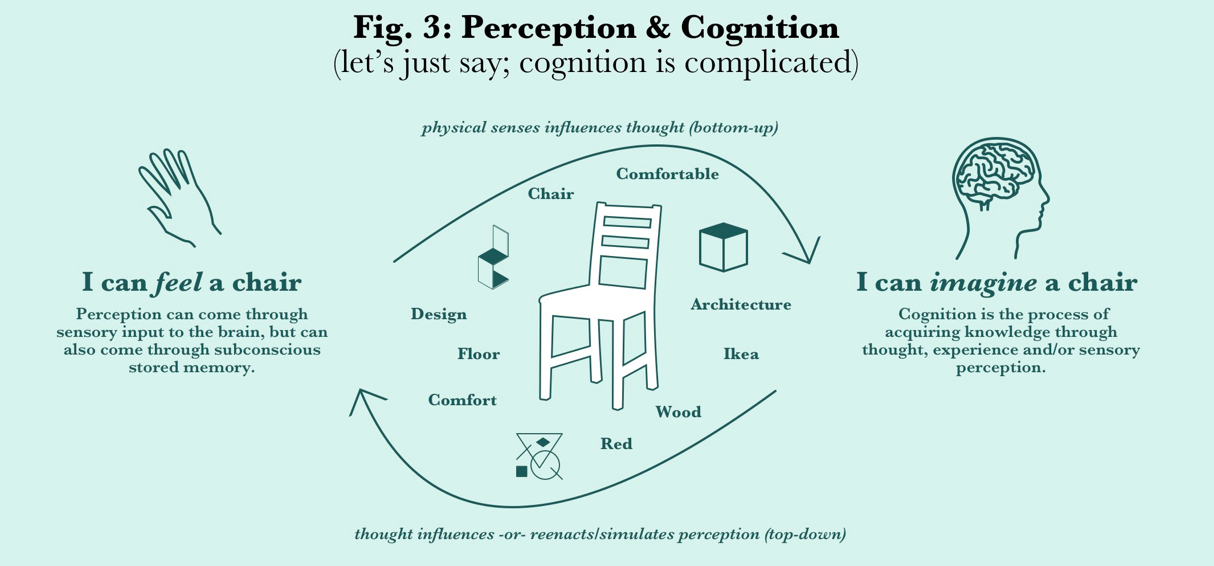
A New Approach to Behaviour Modelling – UX Schema Cards
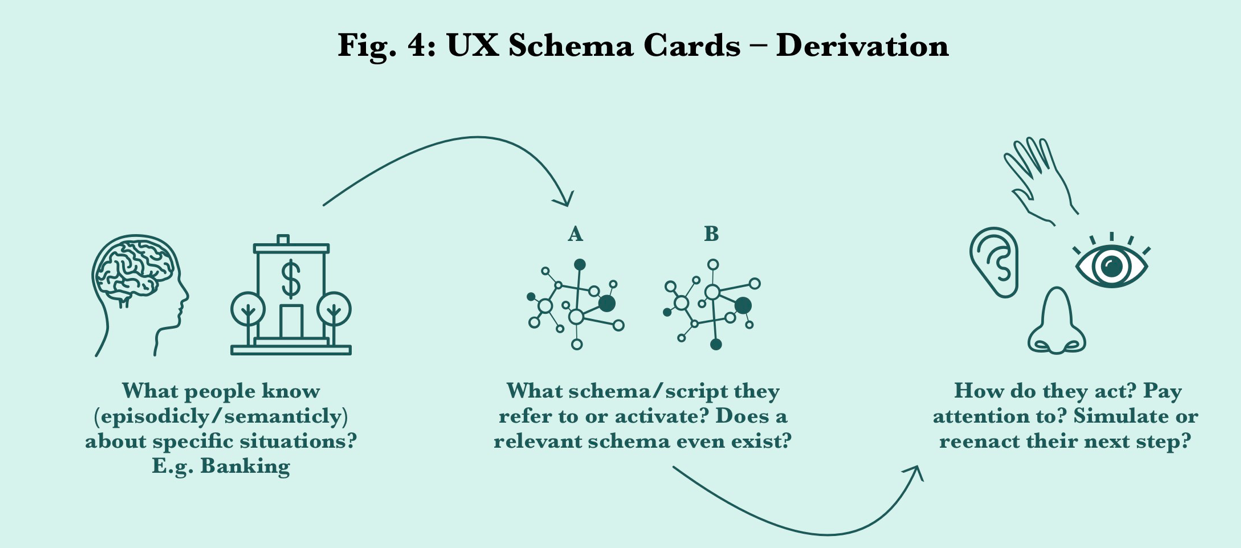
It is surprisingly obvious that whatever information is stored and organized in our episodic/semantic memory controls what we think/feel/do next. The theory of schemata (amodal) and the theory of perceptual symbols (modal) try to explain just that – from a cognitive science and psychology perspective.
The idea for the UX Schema Cards was to use these two theories and apply them to behavioural modelling for designing better human-computer-interactions or maybe even extend this approach to physical, non-digital services. In a sense – UX Schema Cards can become a coding system of (user)engagement-related behavior. Someone already started creating solid data structures, which can be used to easier model machine readable ontologies and eventually neural networks for better classification and AI. All material for later development. I am still in draft mode.
UX Schema Cards organize our knowledge, assist recall, guide our behaviour, predict likely happenings and help make sense of current experiences.
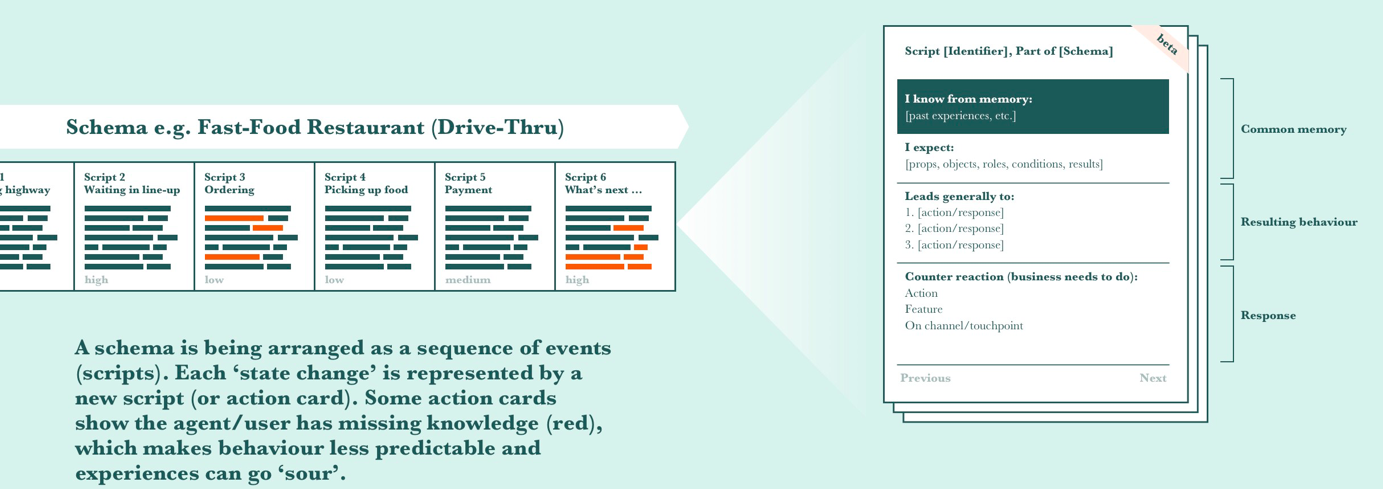
We learned, that in order to better predict people’s behaviour we need to understand what is stored in their memory at any given time and how it is organized and accessed. This is where schemata, scripts and slots come into place. Consider this as a first draft as how to make UX Schema Cards. The main building blocks are:
Umbrella Schema (modified)
A schema is an organized unit of knowledge for a subject or event (e.g. fast-food restaurant schema). It is based on past experience and is accessed to guide current understanding or action. So one of the first steps for us as designers is to identify which schema is currently active and in which context –or– if a schema even exists. Some people might experience something for the first time in their lives and they don’t have any previous knowledge. Nonetheless, they than refer to other schemas, depending on the cues they get or can recall. Once you got the right schema – extract what common knowledge is present. Do proper research – YEAH!
Scripts (slightly adapted from the original meaning)
Scripts describe a sequence of events common in our lives (e.g. waiting-in-line). They are being used to identify procedural knowledge people leverage in certain situations. Our schema is filled with scripts, where each script has a set of default values such as standard roles, props, objects, conditions and results, that lead to the next script. I contemplate calling scripts action cards. What do you think?
Slots
Scripts (or action cards) have slots that can be filled with default knowledgeor specific values. The stuff we wrote about earlier (roles, props, etc.). So quite often, what is filled in for one slot may affect what can be filled in for other slots. In addition to that, they capture what people do, while being ‘trapped’ inside a specific script (e.g. waiting in line, ordering, paying, etc.). So we basically capture what is peoples’ auto-modus-operandi. To make the UX Schema Cards complete, we need to add guidance on how the business should respond accordingly in each script (see Figure 5). That’s it.
Final thoughts and conclusion
If you followed some of my previous articles, you know by now, that I often share work in progress. The idea to UX Schema Cards is such work in progress, but I believe sharing things-in-the-making is more important than sharing results. So feel welcome to use this as an inspiration and maybe take some of these ideas and play with them; iterate, add, edit, tinker, refine and delete if necessary. I hope this article will spark some new interest for the schema theory and cognition. Happy designing!


